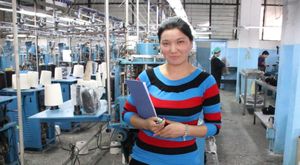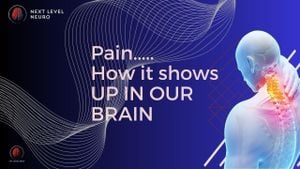The risk of falling is significant across various age groups, impacting quality of life and daily functioning. To address this, researchers from Seoul National University have conducted a study examining the effects of different perturbation intensities on backward slip-falls induced by split-belt treadmills, providing insights for fall prevention training programs.
According to the World Health Organization, falls are one of the leading causes of injury-related deaths and hospitalizations worldwide. Understanding the biomechanical factors contributing to falls is especially important as over 50% of falls are caused by slips. With slip-related falls resulting in serious injuries such as traumatic brain injuries and fractures, effective training methodologies to mitigate these risks are urgently needed.
This study investigates how varying intensities of perturbations—combinations of speeds and durations—affect the likelihood of falls during walking on split-belt treadmills. Utilizing 24 healthy young adults, the researchers conducted 16 randomized trials involving different slip scenarios to quantitatively assess fall rates and maximum loading forces from induced slips. Each participant’s responses were analyzed under controlled conditions, focusing on how the speed and duration of the perturbation influenced falling outcomes.
The results showed alarming trends: as the induced slipping speed increased, so did the fall rate, reaching up to 76% overall. The relationship between speed and fall risk was clear, and the likelihood of falling increased regardless of slip duration. "The findings may contribute to developing design criteria for controlled perturbations using split-belt treadmills, aimed at enhancing our understandings of fall biomechanics and informing fall prevention training programs," said the authors of the article.
This study not only addresses the immediate impacts of slipping on the body but also opens the door to tailoring training protocols based on the intensity of perturbations. By establishing benchmarks for speed and duration, training can be adjusted to challenge individuals appropriately without overwhelming their recovery mechanisms. Future research directions highlighted the necessity of charting out these design criteria to leverage split-belt treadmill technology effectively.
Research shows the methodology employed can transition to practical settings, creating environments for individuals to safely experience perturbations, allowing for realistic training scenarios to prepare for slips. Notably, the study emphasizes how adjusting speed and duration can effectively affect slipping distances, potentially influencing the likelihood of falls. "The study demonstrates adjusting speed and duration can effectively alter slipping distances, thereby potentially influencing the likelihood of falls," stated the authors.
These findings indicate the strong need for improved training methods and biomechanical assessments to help develop effective fall prevention strategies. The insights gained from the study could lead not only to safer training regimens but also to enhanced awareness of fall risk dynamics among vulnerable populations.
Overall, the systematic investigation of slip-intensities sets the stage for innovative training programs, with the potential to significantly reduce fall risks for individuals through targeted interventions. With falls being more than just personal injuries—they reflect on healthcare costs and the burden on healthcare systems—this research becomes pivotal to public health and safety. The study highlights future avenues for research, including exploring various demographic factors and environments under which slips occur, ensuring comprehensive approaches to mitigating fall risks.
The data generated from this research is expected to be valuable for future investigations on fall mechanisms and prevention using controlled setups like split-belt treadmills.



